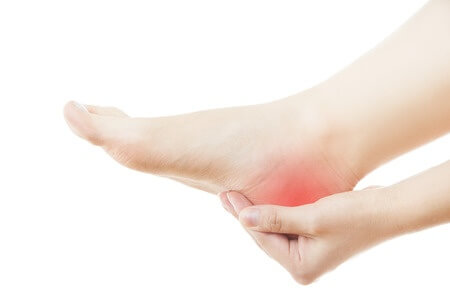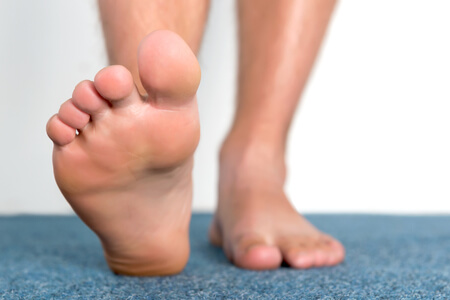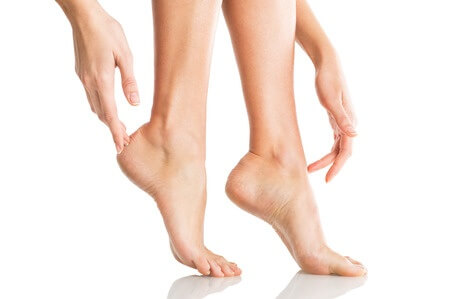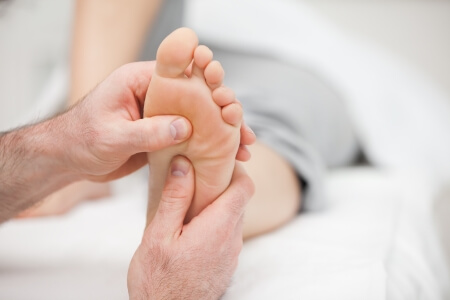Dallas (214) 340-8885
Athens (903) 677-9090
Gun Barrel City (903) 887-4341
Dallas (214) 340-8885
Athens (903) 677-9090
Gun Barrel City (903) 887-4341

For most, plantar fasciitis pain comes on gradually. Your plantar fascia (fibrous tissue along the bottom of the feet) helps you stay mobile and connects the balls of the feet to your heel bone. Repetitive movements often required in sports or certain jobs can make it become inflamed.
If you notice that the bottom of your feet feel sore or tight, try one or more of the following 10 home remedies to prevent the pain from getting worse:
If your plantar fasciitis pain does not get better after trying some of these home treatments, consult with our podiatrist, Dr. Jonathan M. Kletz, at Texas Foot Works. Our foot doctor will assess your feet to get you the right treatment. Make an appointment today at any of our offices in Abrams (Dallas), Athens, and Gun Barrell City!

Osteoporosis, a disease in which your bones slowly lose more calcium than it absorbs, is usually thought of as a disease that your grandparents get and suffer from. And for the most part, that’s true. However, those with early onset osteoporosis can be diagnosed even before the more typical age of 50 years old.
The good news is that it can be prevented or slowed with good nutrition and strength training exercises. Even after diagnosis, medications are available that may help slow the bone loss process and even restart bone building.
How do your feet come into play?
Don’t forget, each foot is made of 26 bones, which means that the feet account for about a quarter of the all the bones in the body. This means that osteoporosis, a systemic disease of the bones, is likely to affect your feet and ankles.
Since your feet have to bear the weight of your entire body, that puts more pressure on them as they endure impact on the ground. The feet and ankles are more likely to experience:
In fact, the bones can become so brittle that when you go in for a checkup on pain, redness, and swelling on your feet, our podiatrist may detect a fracture, and also determine that you may have osteoporosis. That’s right, some people find out they have osteoporosis because of a foot fracture!
What can you do to reduce risks
Do you or someone in your family have osteoporosis? It may be passed down genetically, so consult with our podiatrist, Dr. Jonathan M. Kletz, at Texas Foot Works. He will assess your feet to get you the right diagnosis so that you can get the appropriate treatment. Make an appointment today at any of our Abrams (Dallas), Athens, and Gun Barrell City, TX offices!

Did you know that diabetes can affect not only your blood sugar levels, but can also be damaging to your kidneys, eyes, nerves, and feet? In fact, for those who do not have severe symptoms, losing feeling in the feet can be the first sign of diabetes. After an assessment by a podiatrist or other medical professional, patients with this condition, known as neuropathy, in the feet can eventually be diagnosed with diabetes.
Unfortunately, it doesn’t stop there. Neuropathy is a result of nerve damage due to high levels of blood sugar. It can have effects beyond a loss of sensation – it can lead to reduced circulation and healing, because your body can no longer communicate properly to serve your feet’s needs. The smallest cuts or injuries can become larger issues, such as ulcers. That’s why it’s important to take care of your feet, whether or not you have diabetes. After all, about 10% of the US population has diabetes (including those who are not yet diagnosed).
The following are diabetic foot exam steps that you can perform on your own. It can help you to find signs of diabetes-related foot problems that you can treat sooner, rather than later. If you have already lost sensation in your feet, be sure to check your feet daily:
Foot care for diabetics is very important. If you notice any changes in your feet, consult with our podiatrist, Dr. Jonathan M. Kletz, at Texas Foot Works right away. He will assess your feet and ankles to see what treatment you may need. Since an unnoticed problem can become way worse and more difficult to treat, it’s important that you make an appointment today at any of our offices in Abrams (Dallas), Athens, and Gun Barrell City, TX!

In many cases of acute injuries, as well as with chronic pain symptoms, podiatrists will often prescribe orthoticsas part of rehabilitation or pain management. Depending on the reason for prescribing orthotics, they can be useful for prevention of future problems (e.g. when used for children), immobilizing injuries to prevent worsening symptoms (e.g. after foot or ankle surgery), and for treating painful symptoms of foot or ankle deformities.
There are generally two types of orthotics that our foot doctor will prescribe: accommodative foot orthoses and functional foot orthoses.
Accommodative orthotics are:
Functional orthotics are:
Both are created by taking a mold of your feet and/or ankles using plaster or foam. Mechanical or optical scanners can also help to take measurements for an accurate fit. This process takes place during an office visit, taking into consideration your footprint, gait, and any inflammation or deformity in the feet or ankles. The end goal is to either relieve symptoms so that you can resume normal activities without pain, or to deter/correct a deformity that can keep getting worse.
For additional questions regarding how orthotics can help your foot or ankle pain, consult with our podiatrist, Dr. Jonathan M. Kletz, at Texas Foot Works. He will assess your feet and ankles to see if orthotics will work for you. Make an appointment today at any of our Abrams (Dallas), Athens, and Gun Barrell City, TX offices!

Even post-Thanksgiving, there’s a lot of traveling you might have to do. The December holidays, as well as New Year’s Eve celebrations, not to mention skiing or snowboarding trips, can mean more flights and/or bus rides coming up. As you pack your bags and try to remember every single item you may need, we have a few extra suggestions for you. The following “Top 10 Tips for Traveling Feet” will (hopefully) remind you that your feet, which carry you everywhere, will need some care while taking you on your travels:
For questions regarding travel and your feet, consult with our podiatrist, Dr. Jonathan M. Kletz, at Texas Foot Works. He will assess your feet and ankles to give you tips for a smooth trip. Make an appointment today at any of our offices in Abrams (Dallas), Athens, and Gun Barrell City, TX!